The Encrypting File System (EFS) is a built-in encryption tool that protects private data from unauthorized access. However, some users encounter an issue where the "encrypt contents to secure data" option is greyed out, preventing them from encrypting folders in Windows 10. If you're facing this problem, this guide will help you understand why the Windows 10 encrypt folder greyed out issue occurs and provide 4 effective solutions to fix it.
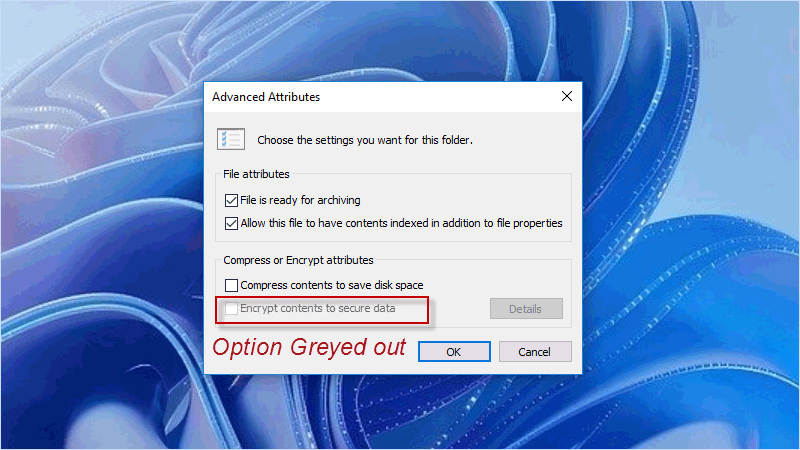
Several factors contribute to the greyed out encrypt option. Firstly, note that the "Encrypt contents to secure data" option is unavailable in Windows Home Edition. So, check your Windows Edition; if it's Home Edition, consider upgrading to Pro or Enterprise Edition, which supports this encryption feature. Alternatively, you can use a professional tool like iSumsoft FileCarer to encrypt folders.
Additionally, Windows services play a crucial role in the operation of the encryption feature. If the encryption service is disabled or stopped, the encryption feature won't work. Improper registry values and corrupted system files can also cause the issue. After considering these factors, you can try the workarounds in the next part to fix the issue.
One common solution to fix the "Encrypt contents to secure data" option being greyed out is to manage the Encrypting File System (EFS) services. You need to check if the EFS service is stopped or disabled in Windows services. If so, set it to start automatically.
Step 1: Press Win + R and enter services.msc in the Run window. Then hit Enter.
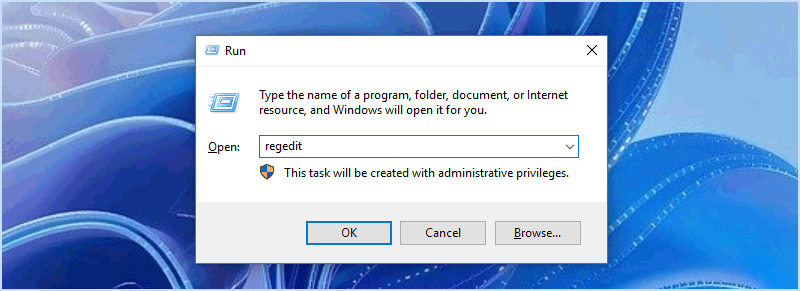
Step 2: In the Services window, locate Encrypting File System and double-click on it.
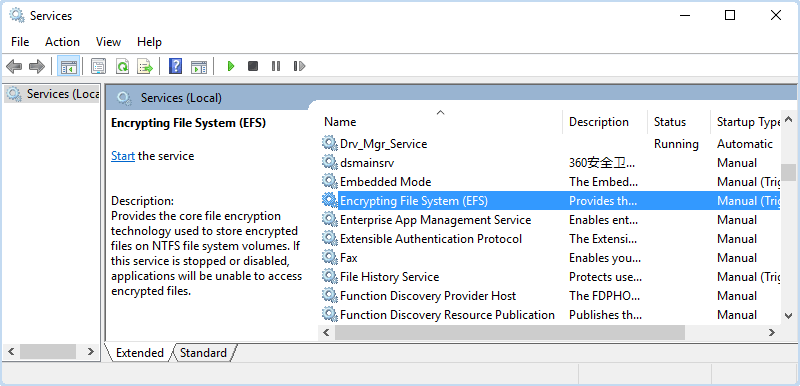
Step 3: In Startup type, choose Automatic from the dropdown menu. Then click Start and OK.
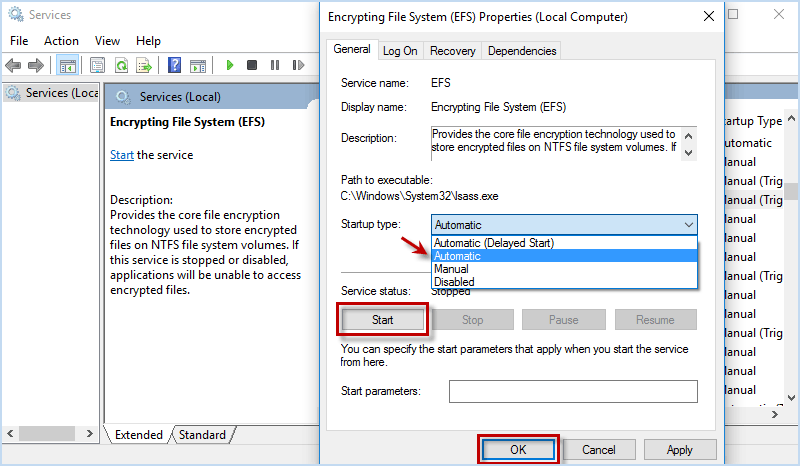
If the "Encrypt contents to secure data" option is greyed out, you can enable the Encrypting File System via the Command Line.
Step 1: Right-click the Start menu and press A to run Command Prompt as administrator.
Step 2: Enter the following command and press Enter: fsutil behavior set disableencryption 0
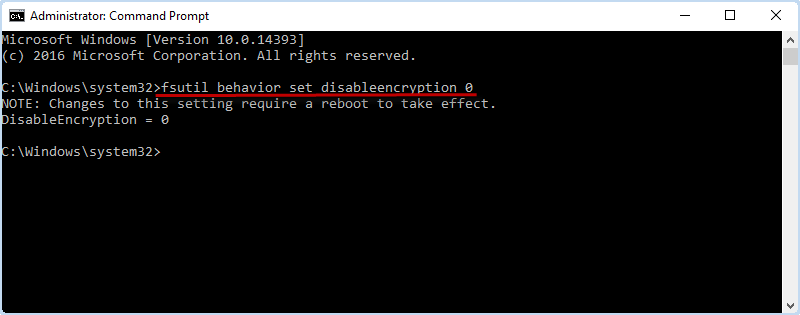
Sometimes, the "Windows 10 encrypt folder greyed out" issue is caused by a registry error. To fix it, modify the registry key of the File System.
Step 1: Press Win + R to open the Run window. Then enter regedit and click OK.
Step 2: Open the FileSystem folder using the path: HKEY_LOCAL_MACHINE\SYSTEM\CurrentControlSet\Control\FileSystem
Step 3: Under the FileSystem folder, double-click on the NtfsDisableEncryption value. Set Value data to 0 and click OK. Reboot your computer and check if the issue is resolved.
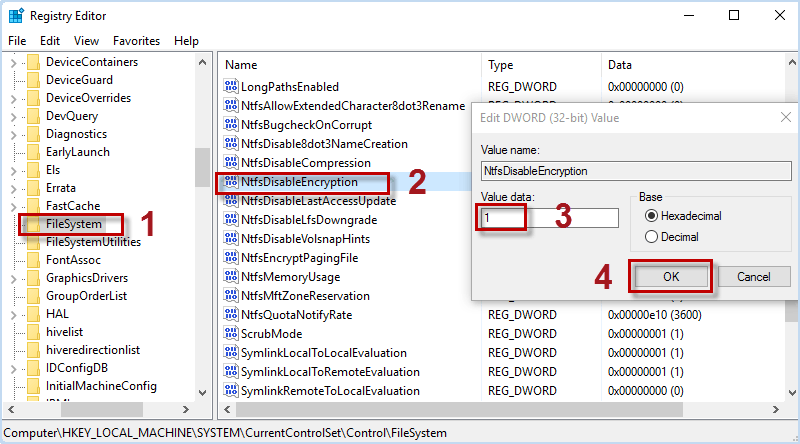
Corrupted system files can also cause the greyed out encryption option. Use the SFC and DISM tools to check and fix corrupted system files.
Step 1: Right-click the Start button and choose Command Prompt (Admin).
Step 2: Enter the command sfc /scannow and hit Enter.
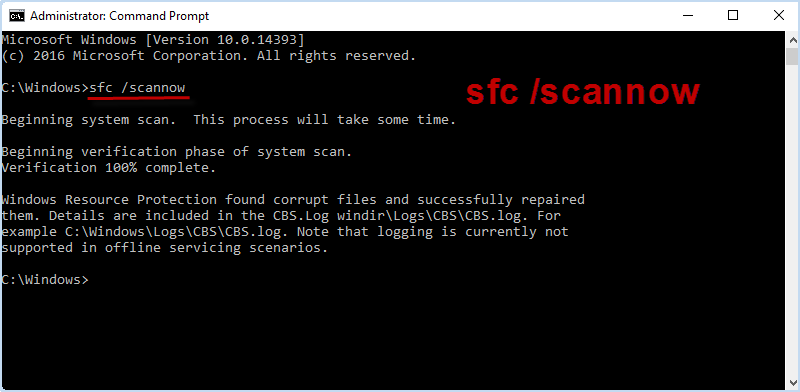
Step 3: Run Command Prompt as administrator again. Then enter the command DISM.exe /Online /Cleanup-image /scanhealth and hit Enter.

After repairing corrupted system files, the encryption option should be available again.
If the native encrypt option remains greyed out, use a third-party encryption tool like iSumsoft FileCarer to encrypt specific files and folders. Compared to Windows' built-in encryption feature, iSumsoft FileCarer provides stronger protection by encrypting folders with a password, preventing access by other users across all accounts.
In addition to encrypting files and folders, iSumsoft FileCarer allows you to hide, disguise, and permanently delete folders. To start, install iSumsoft FileCarer and launch it.
DownloadStep 1: On the main interface, choose the Encrypt option.
Step 2: Click the folder icon to select the folder you want to encrypt.
Step 3: Create a password and click Encrypt.

Now you know how to fix the "can't encrypt folder" issue with the encrypt contents option greyed out. Besides using the built-in encryption tool, you can use a third-party tool like 7-Zip to compress and password-protect files. For better security, consider using iSumsoft FileCarer, a professional file encryption tool that strongly encrypts specific files on local drives or external hard drives.